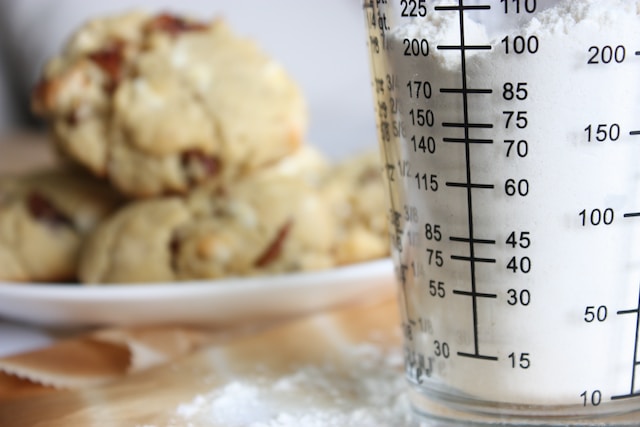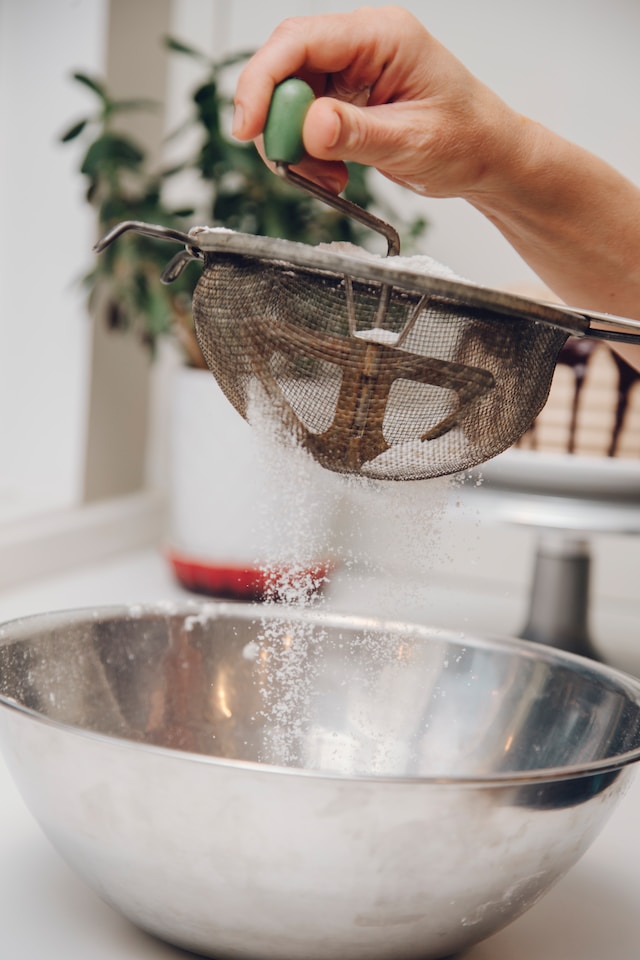The Art of Crafting Delicious Treats

The aroma of freshly baked goods is one that can evoke memories of warmth, comfort and happiness. And if you are a passionate baker, then you must know the sheer joy of pulling out your own artisanal creations from the oven.
Baking is not just about following a recipe. It is an art form that requires patience, precision, creativity and an unrelenting dedication to perfection. Anyone can cook, but not everyone can bake.
But worry not, as I am here to guide you through the labyrinth of baking techniques.
Essential Baking Tools and Equipment
As a baker, having the right tools and equipment can make all the difference in your baking process. Here are a few essential baking tools that every baker should have in their kitchen:
Mixing Bowls – A mixing bowl is an essential baking tool, used for mixing all your ingredients together. It is best to have a variety of sizes, so you can use the appropriate one depending on the recipe.
Spatula – A spatula is used to mix, scrape, and fold ingredients together. Having a good quality spatula will make your baking process easier and more efficient.
Whisk – A whisk is used for blending and mixing ingredients together, creating a smooth and consistent batter. It’s also useful for whipping cream, egg whites, and other ingredients that require air to be incorporated.
Baking Pans – Baking pans come in various shapes and sizes, and are used to bake cakes, breads, pies, and other baked goods. Invest in good quality baking pans, as they will help your baked goods cook more evenly.
Measuring Cups and Spoons – Measuring cups and spoons are crucial in baking, as precision is key. Measuring by weight is the most accurate, but if you don’t have a kitchen scale, measuring cups and spoons are the next best thing.

Oven – A reliable oven is a must-have for any baker. Make sure to test the temperature accuracy of your oven by using an oven thermometer to ensure the temperature is correct.
When selecting baking tools and equipment, it’s important to invest in good quality products that will last you a long time. Cheaper items may seem like a bargain, but they may not work as well or last as long as more expensive, higher quality options.
Key Ingredients in Baking:
In the world of baking, certain ingredients are considered fundamental, as they form the basis of countless recipes. Let’s take a closer look at some of these key ingredients:
Flour: Flour provides structure and texture to baked goods. All-purpose flour is versatile and commonly used, but there are various types available, such as cake flour, bread flour, and whole wheat flour, each suited for specific recipes.
Sugar: Sugar adds sweetness and contributes to the overall texture of baked goods. Granulated sugar is a pantry staple, but you’ll also encounter brown sugar, powdered sugar, and alternative sweeteners like honey or maple syrup in different recipes.
Eggs: Eggs act as binders, provide moisture, and contribute to the richness of baked goods. They help in leavening and add stability to batters and doughs.
Leavening Agents: Baking powder and baking soda are leavening agents that create the desired rise and lightness in baked goods. They react with other ingredients to release carbon dioxide, resulting in fluffy cakes and bread.
Use fresh and high-quality ingredients
The quality of ingredients significantly impacts the outcome of your baked creations. Using fresh ingredients ensures optimal flavors and textures. Here’s why it matters:

Taste: Fresh ingredients carry vibrant flavors that enhance the taste of your baked goods. High-quality flour, for example, imparts a better flavor profile than older, stale flour.
Texture: Fresh ingredients contribute to the desired texture of your baked goods. Fresh eggs, for instance, add moisture and structure, resulting in lighter and airier cakes and pastries.
Consistency: Using fresh ingredients ensures consistency in your baking. The moisture content and quality of ingredients affect how the batter or dough behaves during mixing and baking, leading to more predictable results.
Substitutions and alternatives for common baking ingredients
Sometimes, you may find yourself in a situation where you’re missing a specific ingredient or need to accommodate dietary restrictions. Here are a few substitutions and alternatives for common baking ingredients:
Flour: Experiment with gluten-free alternatives like almond flour, coconut flour, or oat flour for those with gluten sensitivities. However, note that these flours may behave differently in recipes, so adjustments might be necessary.
Sugar: Natural sweeteners like agave nectar, stevia, or applesauce can be used as substitutes for refined sugar. Keep in mind that they may alter the taste and texture, so experimentation is key.
Eggs: In vegan baking or for those with egg allergies, you can use substitutes like mashed bananas, applesauce, silken tofu, or flaxseed meal mixed with water as egg replacements. These alternatives provide moisture and binding properties.
Remember to research and understand the specific properties of each alternative before making substitutions to achieve the desired results.
Baking Techniques and Tips
Baking is not simply following a recipe; it requires a combination of techniques, experience, and creativity. Let’s explore some common baking techniques and tips to help you achieve the perfect texture, taste, and appearance in your baked goods.
Sifting: Sifting dry ingredients, such as flour and cocoa powder, helps to remove any lumps and creates a lighter and fluffier mixture. Use a fine-mesh sieve and sift the ingredients over a bowl or directly into the mixing bowl.
Folding: Folding is used when you want to mix delicate ingredients, such as whipped cream or egg whites, into a batter or dough without losing the air pockets. Use a spatula to gently fold the ingredients together until just combined.

Creaming: Creaming is the process of beating sugar and butter together until light and fluffy. This technique creates air pockets that will help your baked goods rise. Make sure your butter is at room temperature and start on a low speed before gradually increasing the speed.
Temperature: Temperature plays a crucial role in baking. Make sure your ingredients are at the right temperature before using them, and follow the recipe for the recommended oven temperature. An oven thermometer can help ensure your oven temperature is accurate.
Timing: Timing is key when it comes to baking. Set a timer and follow the recipe closely. Overbaking can dry out your baked goods, while underbaking can leave them gummy or dense.
Troubleshooting: Even the most experienced bakers can run into issues. Here are some common problems and solutions:
Collapsed cakes: This can happen if too much leavening agent is used or the oven temperature is too low. Check the recipe for the correct amount of leavening agent and make sure your oven temperature is accurate.
Overbaked cookies: This can result in burnt or dry cookies. Check your oven temperature and timing. Lowering the oven temperature and baking for a shorter time may help.
Dry cakes: This can occur if too much flour is used or the batter is overmixed. Follow the recipe closely and be careful not to overmix.
Baking is a rewarding and enjoyable experience that requires a combination of techniques, quality ingredients, and practice. Remember to have fun and don’t be afraid to experiment with new flavors and techniques. With these tips and techniques, you’ll be on your way to creating delicious and beautiful baked goods in no time.
